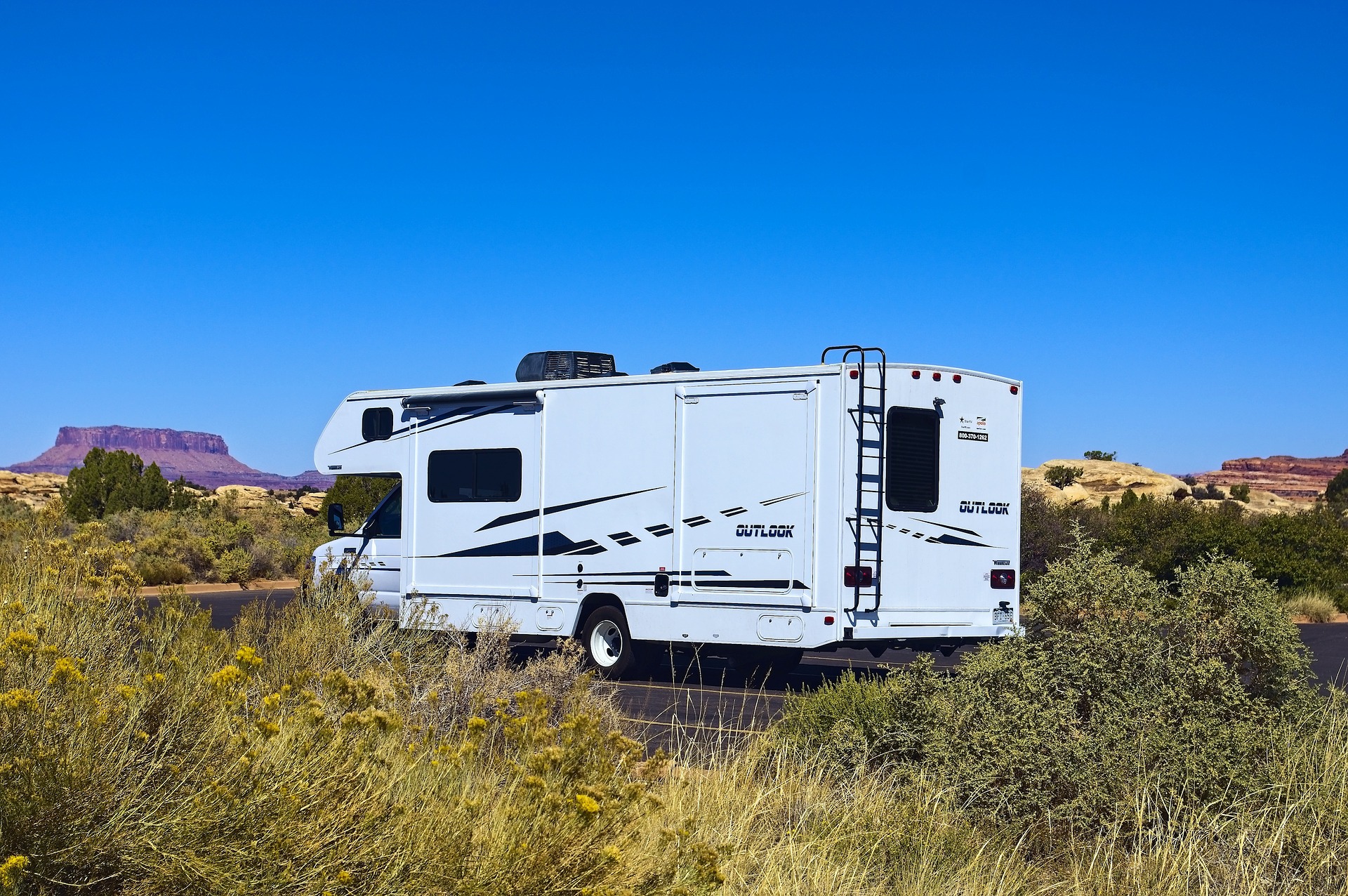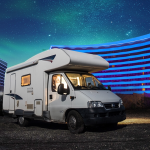Hi Mark My Words readers! This month we’ve got questions on propane appliances, cell phones and steps. Remember to send your RVing questions to [email protected]. The following answers will help you practice safe and sound RV travel this summer.
Hi Mark,
We bought our first camper trailer (Sunset 186BH) and took her out for the first quick trip. Before we left, we plugged in and got the refrigerator cooled down and loaded 24 hours before. At, the campsite (dry site no electric hookup) we ran the fridge off of the propane tank; everything seems to work great, the fridge stays cold, but after 8-12 hours, we run out of propane (15-pound tank)! Any ideas on what the issue could be? I’ve read that your fridge should hardly use any propane. We haven’t run the furnace or hot water heater at all and only cooked once with the stovetop. Any ideas are much appreciated!
Thanks,
Brian
Hi Brian,
A typical RV fridge will run for weeks on a 20-pound BBQ grill bottle, so something is wrong. Any chance the tank was close to empty when you set out? If not, then the most likely answer is there’s a leak somewhere. You can have the system tested, but some time spent with a little soapy water and a small paintbrush will usually find a leak. Just turn on the propane at the tank and brush some soapy water on every connection. Even a tiny leak will blow big bubbles. Usually, tightening the leaking connection will fix it.
Good luck in your search!
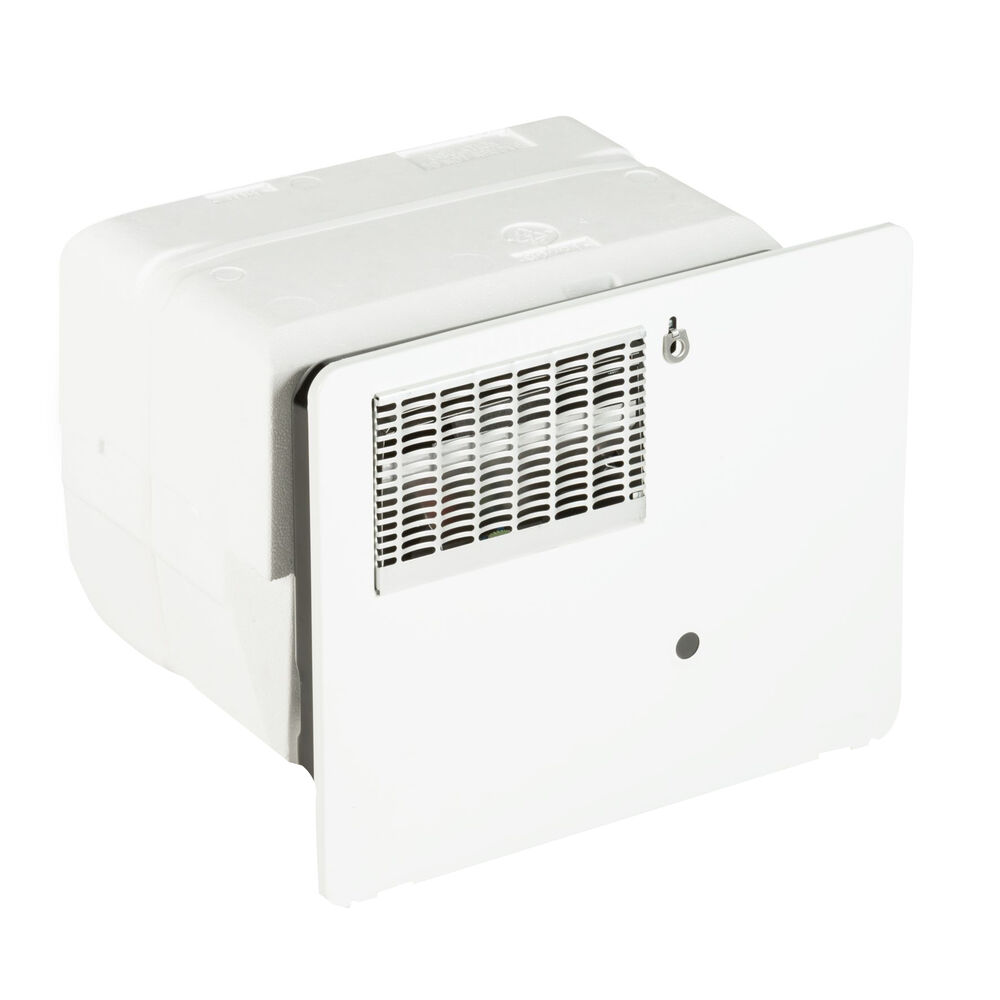
Photo: Camping World
Mark:
I own a 2016 Keystone Cougar 333 MKS. It came equipped with a Suburban 6-gallon propane/electric water heater. The water heater pressure/
temperature valve leaks when the tank is brought up to temperature. The original valve leaked most of the time for the past 6 months. I replaced the valve recently. The valve continued to leak. I checked with the manufacturer and found that there needs to be an air gap at the top of the tank. I followed the manufacturer’s instructions and was able to stop the leak. About a week later, the valve started to leak again. Any ideas on what the problem might be?
Sincerely,
Jeff
Hi Jeff,
What you are experiencing is pretty much normal operation. Yes, if you can keep that air bubble inside the water heater tank, it will eliminate the leaking T/P valve, but it’s almost impossible to keep that air in there. It gets absorbed and pretty soon, it’s gone. No worries, though, the symptoms you describe don’t indicate a failure or an unsafe condition.
I find that if you open any faucet in the RV for a second or two when the tank is heating, it will relieve that pressure caused by the water expanding as it’s heated and prevent the leak. Or, you can add a small expansion tank, like the ones used for residential water heaters in some parts of the country. The small (1 gallon or so) bladder tanks used in reverse osmosis filter systems work well for this. The tanks are inexpensive and easy to install. Just add a tee anywhere in your freshwater piping and hook the tank up to it.
The following is a tip I wrote years ago for my resource site.
-
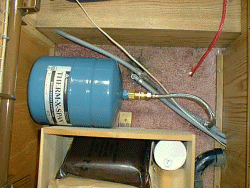
Photo: MarxRV.com
I have been having problems with my water heater… No, it heats water OK, but when it does, I have to keep a close eye on it or the pressure builds up until the relief valve lets go and water runs down the side of the trailer. After reading about using an expansion tank to fix this problem and pricing the Shur-Flo tank in several RV sources, I found a cheaper answer. I went to a local Home Depot, and for $35 I bought a 2-gallon water heater expansion tank. I found room for the tank behind a drawer under the dinette seat. Add a brass fitting or two, a stainless flex hose and a standard PVC compression tee and it looks like this (right).
Probably the neatest thing about using an expansion tank is the way your water system works: I pre-charged the tank with 30psi and then turned on the pump. The pump ran for 30 or 40 seconds and filled the tank. Then, you can use the water for a surprisingly long time before the pump runs again. The water pressure is higher and more consistent, and I find that I can flush the toilet several times and wash my hands, etc. before the expansion tank is emptied. My water heater no longer gives me any problems. As an added benefit, the tank takes care of another minor problem: the freshwater pump is directly under the living room couch which makes into a bed. It was always an annoyance for anyone sleeping there whenever someone would get up at night and flush the toilet. The pump would give them a head massage. With this setup, that won’t be a problem anymore.

Photo: Free-Photos/Pixabay.
Mark:
I am finding I do not have cell phone service at many of the places I stay. I believe it is in part my cattier (T-Mobile) and in part because I am often in mountains, canyons, valleys and remote places where it is difficult to get service. Other than changing to a more costly carrier, do you have any suggestions for emergency phone service? If not, what carriers have the strongest signals in these areas?
Thanks,
Renee
Hi Renee,
Yes, your lack of remote service is due to your choice of carrier. T-Mobile is a great value, but they just don’t have the coverage that Verizon and AT&T do. All is not lost, however. If you want to keep your T-Mobile phone as your primary, you can purchase one of the many available prepaid no-contract phones as a backup. I have been with Tracfone for many years, and it’s my primary phone. Aside from some poor experiences with their customer service, I like the service a lot, and it works well for me. Best of all, Tracfone uses Verizon towers, so you get their great coverage without the hefty price tag and contract.
I find Verizon’s coverage to be surprisingly good, even in remote areas. There are always some places where you can’t get a signal, but in recent years, that has become less of a problem.
Tracfone, like all the prepaid providers will sell you a phone, and then you purchase “cards” that give you voice minutes, and if the phone is capable, texts and data. I just looked at their website (www.tracfone.com) and you can buy low-end smartphones and even flip phones for $5 – $20! That’s cheap! You can buy an inexpensive phone, then add a plan with 400 voice minutes and a year of service for about $100. Carry it as your backup, for when your main phone has no service.
I currently have a decent Tracfone Samsung smartphone that does everything any other smartphone does, and I pay between $10 and $20 a month, on average, depending on how fast I use up my minutes. I don’t spend hours talking on the phone, so a bundle of 1,000 minutes lasts me for many months. I also get a chunk of data and about 1,000 texts every time I refill it. You might consider dropping T-Mobile if a Tracfone would work for you as a primary.
There are lots of other providers out there, just google prepaid phones, you’ll find a bunch. Plus, you can usually buy TracFone’s, Straight Talk and other prepaid phones at Walmart and the Dollar store.
If you don’t want to mess with a second phone, or changing your current provider, there are some other options if safety is your prime concern. Look at this. It’s a satellite communication device designed for folks who hike in the boonies, and they offer several options, depending on what you need to accomplish. With a Spot, you’ll always be able to call for help, and even text someone with your status. They aren’t cell-based, so they work absolutely everywhere.
Hope that helps!
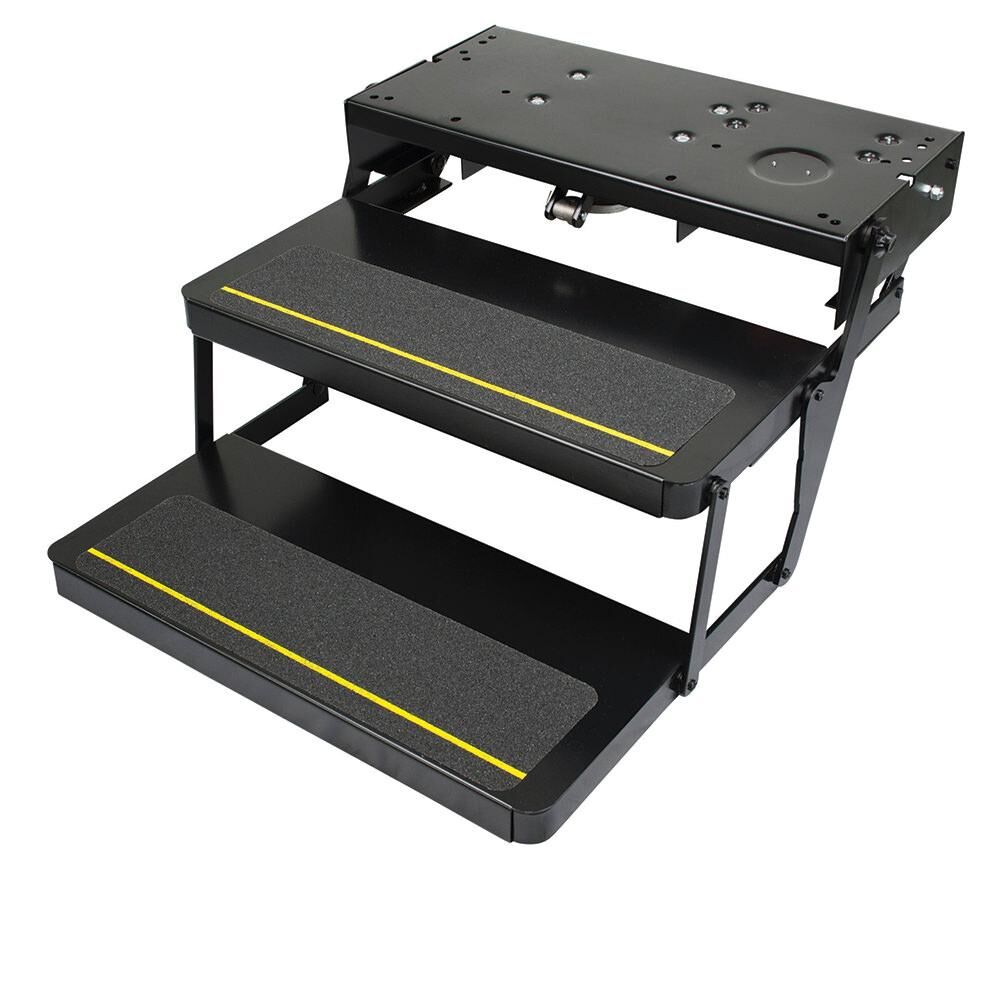
Kwikee Double Electric Step. Photo: Camping World
A question please, Mark.
When my motorhome is parked at home, should I leave the electric steps out or retracted over a period of time?
Thanks,
Dr. Jack
Hi Jack,
It really doesn’t matter, do whatever feels right to you. I leave my Kwikee electric steps extended at all times when the RV is parked, and only retract them for travel. There is no downside to doing that, as the steps are designed to be used that way. On my steps, I turn off the power to the steps with a switch once I am parked and they are extended. That keeps them extended regardless of door position. When the engine is started, my steps automatically retract even if that switch is off, so there’s no chance of forgetting them and driving off. I suspect your steps work in a similar fashion.

